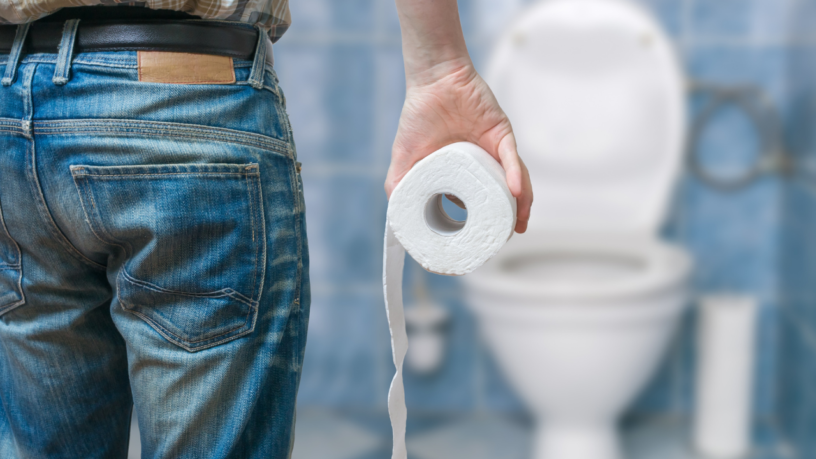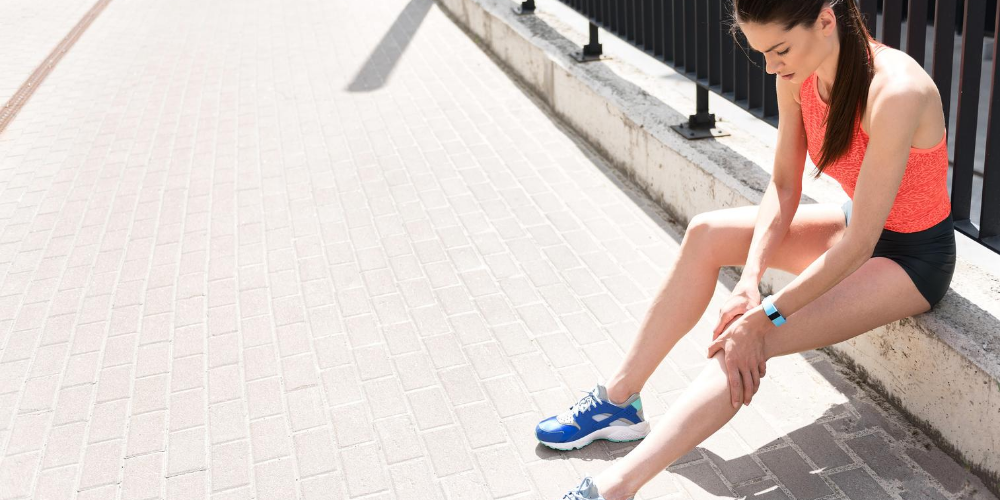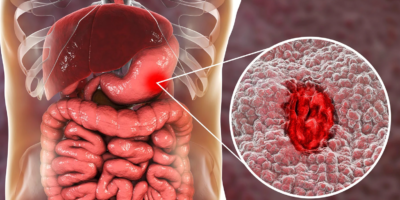A long list of maladies can cause diarrhea. Infections are a common cause of acute diarrhea. Accompanying symptoms often include nausea, vomiting, mild fever, cramping, and general malaise. Toxins produced by bacteria also make us sick. Food allergies and intolerances (e.g., lactose intolerance) can cause gas, crampy pain, diarrhea, and vomiting. Antibiotics disrupt the normal microbial ecosystem to cause diarrhea. Overconsumption of fruit and fruit juice loosens stools. Fear and extreme anxiety can trigger a precipitous emptying of the bowels. In irritable bowel syndrome (also called spastic colon), a condition of altered bowel motility, diarrhea may alternate with constipation.


1. BRATT Diet
How it works: These low-fiber, bland foods high in carbohydrates are easy for an inflamed intestinal tract to digest. Once the diarrhea is under control after twenty-four hours of clear liquids, the BRATT diet helps the body make its way back to accepting a balanced diet including fats, proteins, and fibers. Once you can tolerate bland foods for twenty-four hours, feel free to return to fiber-rich foods.
- PREPARATION:
- Bananas
- Rice
- Applesauce
- Tea
- Toast
- DIRECTIONS: Alternate these foods throughout the day. Although we generally prefer whole grains, we recommend low-fiber white rice and white bread when coping with diarrhea. Be sure to eat applesauce, not raw apples, which loosen stools.
- YIELD: AS MANY APPLICATIONS AS NEEDED
2. Rehydration Drink
How it works: The biggest risk associated with diarrhea is dehydration. Children and the elderly are most vulnerable. This drink replaces depleted water, salt, potassium, and sugar. The baking soda also helps correct losses of alkaline fluid.
- PREPARATION:
- ¼ cup (60 ml) fresh orange juice
- 2 cups (475 ml) room-temperature water
- ¼ teaspoon baking soda
- 2 teaspoons (14 g) honey
- DIRECTIONS: Combine the orange juice and water in a small pitcher. Stir in the baking soda until dissolved. Stir in the honey until dissolved.
- YIELD: 02 SERVINGS
3. Blackberry Tea
How it works: Blackberry tea is an astringent, which gently contracts and helps dry tissues in the intestinal tract.
- PREPARATION:
- 3 cups (710 ml) water
- 2 tablespoons (3 g) chopped dried
- blackberry leaves, or 4 tablespoons
- (24 g) fresh honey
- DIRECTIONS: Boil the water. Add the leaves. Turn off the heat, cover, and steep for 15 to 20 minutes. (If you also add blackberry roots, turn the heat to low and simmer for 20 minutes.) Strain. Sweeten with honey, to taste.
- YIELD: 03 SERVINGS
4. Green Tea, Lemon, and Honey
How it works: Green tea is astringent and it inhibits major food-borne bacteria, such as E. coli, Salmonella typhimurium, and Staphylococcus aureus. Lemon is astringent, too, and contains vitamin C and bioflavonoids, which support the immune system. The essential oils in citrus fruits also discourage bacteria such as E. coli and Salmonella. Honey is anti-inflammatory, soothing, immune system – enhancing, and antibacterial.
- PREPARATION:
- 1 cup (235 ml) water
- 2 teaspoons (4 g) loose green tea
- 1 teaspoon (7 g) honey
- 1 teaspoon (5 ml) fresh lemon juice
- DIRECTIONS: In a saucepan, boil the water and add the tea. Turn off the heat, cover, and steep for 1 to 3 minutes. In a cup, mix the honey and lemon juice. Strain out the tea leaves and pour the tea into the honey mixture.
- YIELD: 01 SERVINGS
4. Barley Water
How it works: Barley and rice water restore fluids and reverse electrolyte imbalance
- PREPARATION:
- ¼ cup (46 g) uncooked barley
- 3 cups (710 ml) water
- Salt or honey (optional)
- DIRECTIONS: In a saucepan, combine the barley and water. Bring to a boil. Lower the heat to low. Cook the barley gently for 1 hour. Strain out the barley, filling a bowl with the water. Allow th barley water to cool. Add a pinch of salt or 1 teaspoon (7 g) of honey, as desired, before drinking.
- YIELD: 01 SERVINGS
5. Moderating Miso
How it works: Miso, which is made from fermented soybeans, contains probiotics. In research showing that probiotics shorten the course of diarrhea, volunteers received supplemental bacteria. Scientists have not yet studied miso as a remedy for diarrhea. But it will help correct loss of salty and alkaline fluid. Raw garlic inhibits a number of bacteria, viruses, protozoa, and worms.
- PREPARATION:
- ¼ cup (64 g) miso paste
- 2 cups (475 ml) water
- 1 scallion, chopped
- 2 garlic cloves, minced
- DIRECTIONS: Spoon the miso paste into a bowl. Boil the water in a saucepan and lower the heat to low. Pour ¼ cup (60 ml) of boiled water into the bowl with the miso, and stir until the mixture is smooth. Add the miso mixture to the remaining water in the saucepan. Stir until fully blended. Add the scallion. Stir in the garlic just before serving (by not cooking the garlic, you maintain it’s key ingredients).
- YIELD: 02 SERVINGS
6. Quickie Chickie Soup
How it works: While the broth is both nutritious and easy on the digestive system, the sodium from the bouillon helps restore electrolytes to the depleted system. The small amount of chicken helps your system begin acclimating to small amounts of protein.
- PREPARATION:
- 1 cup (235 ml) water
- 1 chicken bouillon cube, crushed
- ½ cup (80 g) uncooked egg noodles
- 1 tablespoon (14 g) minced, precooked chicken breast
- Freshly ground black pepper
- Dried sage or thyme
- 1 garlic clove, minced
- DIRECTIONS: Bring the water to a boil and reduce the heat to low. Sprinkle the crushed bouillon cube into the water. Stir until the bouillon is fully dissolved. Stir in the egg noodles and chicken pieces. Add pepper and sage or thyme to taste. Stir in the garlic just before serving.
- YIELD: 02 SERVINGS
7. The Big Apple—Sauced
How it works: Apples, particularly the peels, contain pectin. If you’ve ever made jam, you known that pectin draws water to make a gel. In that way, it reduces watery diarrhea. Because raw apples are harder to digest, it’s better to consume cooked apples. If you don’t feel up to cooking, use store-bought applesauce. Cinnamon contains the antibacterial agent cinnamaldehyde. Honey is anti-inflammatory, soothing, and inhibits some bacterial species.
- PREPARATION:
- ½ cup (120 ml) water
- 2 unpeeled apples, cored and cut into chunks
- ¼ teaspoon ground cinnamon
- 1 tablespoon (20 g) honey
- DIRECTIONS: Pour the water into a saucepan. Add the apples, cinnamon, and honey and stir together. Cook the mixture over medium heat for about 15 minutes or until the apples are soft. Let the apple mixture cool and mash with a fork.
- YIELD: 3 TO 4 SERVINGS
8. Skinny Oats
How it works: Oats are soothing to irritated linings and contain a complex carbohydrate that enhances immune function. Honey has anti-inflammatory and antibacterial properties. Cinnamon is antibacterial.
- PREPARATION:
- ½ cup (40 g) rolled oats
- 1 cup (235 ml) water
- ½ teaspoon ground cinnamon
- 1 teaspoon (14 g) honey (optional)
- DIRECTIONS:
Mix together the oats, water, and cinnamon in a microwave-safe dish. Heat on high for 3 minutes. (Alternatively, combine the oats and cinnamon in a dish or measuring cup. Boil the water in a small pan, and then stir in the oats and cinnamon. Lower the heat to medium-low and cook, stirring occasionally, for 5 to 8 minutes until the oats reach your desired consistency.)
Add the honey, if desired. Let cool and eat.
- YIELD: 1 TO 2 SERVINGS
9. Carob Shake
How it works: Carob (locust bean) contains locust bean gum, a polysaccharide that binds water. Tannins in carob have an astringent effect. Bananas are a bland, soothing food. They provide needed sugars and potassium. The probiotics, or good bacteria, in some yogurts can help relieve infectious diarrhea—the kind encountered by travelers—by fighting the bad bacteria in the intestines. Whereas many dairy products are difficult to digest during a bout of infectious diarrhea, yogurt can often be tolerated.
- PREPARATION:
- 2 small or l large banana, chopped
- ½ cup (65 g) raspberries (optional)
- ½ cup (115 g) plain yogurt (Read the label
- to buy a yogurt with probiotic organisms.)
- 1 tablespoon (6.5 g) carob powder
- 1 tablespoon (20 g) honey
- DIRECTIONS: Combine the bananas and raspberries, if using, in a blender and blend until smooth. Add the yogurt, carob powder, and honey and fully blend. Serve.
- YIELD: 01 SERVINGS
10. Soothing Carrot-Ginger Soup
How it works: Carrot soup and carrot juice are traditional remedies for diarrhea. Carrots are rich in a number of vitamins, many of which support immune health, and also minerals, including potassium, which diarrhea depletes. They also supply sugars. Cooked carrots are easier to digest than raw. Ginger is antibacterial and eases upset stomachs.
- PREPARATION:
- 2 cups (475 ml) water
- 1 cup (130 g) scrubbed, chopped carrot
- 2 tablespoons (28 g) unsalted butter
- 1 teaspoon (7 g) honey (optional)
- ½ tablespoon fresh lemon juice
- ¼ teaspoon ground ginger
- 1 vegetable bouillon cube
- DIRECTIONS: Bring the water to a boil in a saucepan. Add the carrot and cook about 7 minutes until tender. Meanwhile, melt the butter in a skillet over low heat and stir in the honey, if using. Mix together the lemon juice and ginger in the skillet. Strain the carrots, reserving the liquid, and stir into the skillet mixture. Pour the carrot cooking liquid back into saucepan and add the bouillon cube. Add the skillet mixture to the saucepan and cover. Simmer for about 5 minutes.
- YIELD: 02 SERVINGS
Fact or Myth?
- MOST PEOPLE WASH THEIR HANDS AFTER USING THE BATHROOM. Not so much. An observational study in a college campus washroom revealed that 61 percent of the women and 37 percent of the men washed their hands with soap and water. A 2007 Korean survey found that, although 94 percent of respondents swore they washed their hands after using public restrooms, only 63 percent of those observed actually did. Again, women more often washed their hands. Hand washing after using the toilet and before eating is one of your best strategies for avoiding diarrhea from transmission of disease-causing microbes. In fact, consistent hand washing can reduce the number of episodes of diarrhea by about 30 percent.
- WHEN TRAVELING IN DEVELOPING COUNTRIES, DRINK AND USE ONLY BOTTLED WATER, BUT IT’S OKAY TO BRUSH YOUR TEETH WITH TAP WATER. Myth. Even a little impure water goes a long way toward attacking your system with bacteria. Stick to bottled water for brushing.
Lifestyle Tip
- Practice good kitchen hygiene. Improper food preparation can cause bacterial infection. Use different knives and cutting boards for raw meats and fruits and vegetables. and refrigerate foods as noted on the labels.
- Make toast. Toast a slice of white bread or an english muffin, and then spread with raspberry, blueberry, or blackberry jam. All these fruits have astringent properties.
- Add a squeeze of lime to water. A 2011 study found that straight lime juice inhibited all tested strains of E. coli. So did lime juice plus garlic and ginger. Because straight lime juice is hard to swallow, we recommend instead squeezing a tablespoon (15 ml) of juice into an 8 ounce (235 ml) glass of water.
When to call the Doctor
- Diarrhea lasts more than three days. (For babies younger than six months of age, call if diarrhea lasts more than a day.)
- Signs of significant dehydration occur: urinating less than every 8 hours, lightheadedness, weakness, poor skin turgor (you pick up a pinch of skin and it stays up, rather than popping back down), sunken eyes, and dry mouth, skin, lips, and eyes (no tears with crying).
- Severe abdominal pain and/or a fever over 101°F (38.3°C) accompanies diarrhea.
- Blood or pus appears in stool.
- Prolonged or recurrent diarrhea follows recent foreign travel or a camping trip.
- Diarrhea seems to be associated, along with other symptoms, with a new medication.






Leave a Reply